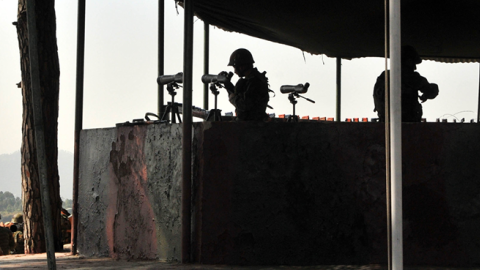At the end of February 2019, the Indian Air Force and the Pakistani Air Force fought each other, marking the first time that India has intentionally crossed into Pakistani airspace since 1971. But which country won the larger battle? In this article, we examine what happened and analyse gains and losses.
The Indo-Pakistan battle occurred after 40 members of the Indian paramilitary force were killed by a suicide bomber from a terrorist group Jaish-e-Mohammed (JeM) on 14 February. In retaliation, 12 Indian fighter jets bombed a “terrorist training camp” in Pakistan on 26 February. The following day, Pakistani fighter jets tried to bomb an Indian military facility.
Both sides lost one or two fighter jets and at least one Indian fighter pilot was captured in Pakistan. Pakistan soon declared that it would release the pilot, which it did on 1 March. Since the pilot’s release, the situation has not escalated. Did the Indian air strike achieve its purpose? There are three categories in which to evaluate this, including military achievement, domestic political achievement, and diplomatic achievement.
In terms of military achievement, this air strike proved India’s capability. India showed that it was able to strike a terrorist camp from a distance of at least 70 kilometres from the Line of Control in Kashmir by using a quick, properly sized, and short-duration operation. This is an important step. Pakistan has sponsored terrorist organisations since Pakistan’s loss in the third Indo-Pakistan War of 1971.
Since the 1990s, India has planned air strikes to target terrorist camps in Pakistan, but despite planning air strikes in 1990, 1999, 2001-02, and 2008, India did not carry them out. This may have been due to a lack of confidence in their military capability. However, India has now developed a strategy, reorganised their Armed Forces, and modernised their equipment.
Currently, India has four choices for countering terrorist incidents with a swift and militarily proportionate response that could be carried out within a 2-3-week time frame. They could attack terrorist camps in Pakistan with: (1) special forces, (2) air strikes, (3) tanks (part of India’s Cold Start Doctrine), or (4) naval blockades against ports in Pakistan. In 2016, India attacked seven terrorist camps in Pakistan-controlled Kashmir near the Line of Control. In 2019, the Indian Air Force bombed terrorist camps in Pakistan 70 kilometres inside the Line of Control of Kashmir within two weeks after the suicide bombing. Both operations were quick responses, militarily proportionate, and finished within 2-3 weeks. Therefore, along with capacity building, India proved their capabilities.
The incident will likely force JeM terrorists to relocate their camps, and move them deeper inside Pakistan. As they move deeper into the interior, it will be more and more difficult for them to attack targets in India. It may also affect Pakistan’s placement of its military and nuclear facilities. From the perspective of military balance, increased capability has given India advantages.
Narendra Modi
Looking at the incident from the angle of domestic politics, the looming Indian election is key. Indian Prime Minister Narendra Modi’s popularity was declining when he decided to implement the air strike. If there were an occasion for him to shore up his popularity and show strength, it needed to happen before March, when the election date was expected to be published. After that date, attempts to increase his popularity in advance of the 11 April election would appear more blatantly political. In this way, it looks as though the air strike was timed well, but the final verdict on that will have to wait until the election results of April.
Seen from the angle of diplomatic achievement, India achieved much this time. After the Indian Air Force bombed the terrorist camp, many countries demanded restraint. But at the same time, countries like the US, Australia, France, and Japan explicitly demanded that Pakistan crack down on terrorist groups. These countries have long avoided choosing sides, but this time their statements were in clear support of India’s position.
Siding with India
Why did the US, Australia, France, and Japan side with India this time? One of the reasons is escalating US-China tensions. When India requested Masood Azhar, the leader of JeM, be condemned as a “global terrorist” by the UN Security Council, China opposed and vetoed the move, the only country to do so. After the air strike, the US, UK, and France again requested Azhar be listed as a global terrorist, and China again intervened in support of its ally, Pakistan. The India-Pakistan conflict has created two alliances: US-India-Australia-France-UK-Japan vs. China-Pakistan. After this latest incident, the US side rallied in support of India’s demand that Pakistan finally crack down on terrorist groups.
Therefore, from a military standpoint, India proved its capabilities in this confrontation. From a domestic politics standpoint, the result of the Indian election will decide which country gained an advantage in this conflict. In terms of diplomatic achievement, India got crucial support from the US and its allies. This means that the air strike did not indicate a total victory, but it was relatively successful for India.

















